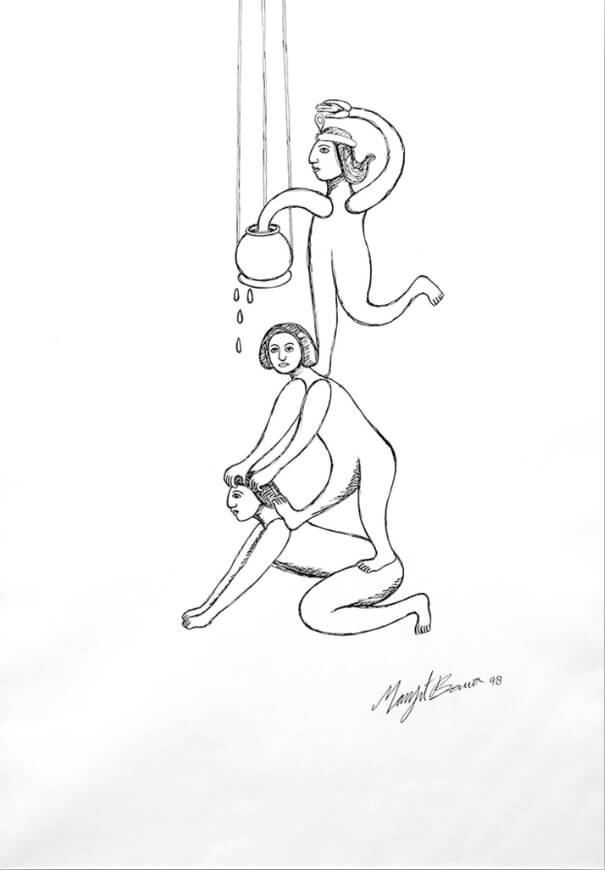Manjit Bawa
ABOUT
known for his figurative paintings based on mythologies and legends. He used saturated colors to define space and the contours of figures
Painter | India
Born in 1941
Died in 2008

Manjit Bawa was an Indian painter who is known for his figurative paintings based on mythologies and legends. He used saturated colors to define space and the contours of figures. Manjit Bawa was born in Dhuri, Punjab in 1941. Since he was from a simple family, he was dissuaded from pursuing art by his mother, who thought it to be an unfit means of livelihood. It was the support of his elder brothers and his own spiritual bend of mind that encouraged Bawa to pursue art. He joined School of Art, Delhi Polytechnic, to study fine arts between 1958 and 1963. His teachers at School of Art, Delhi Polytechnic, included artists like Somnath Hore and B.C. Sanyal but it was Abani Sen who helped him to find his identity as an artist. He made him do 50 sketches a day to cultivate the habit of working diligently. Besides, he pushed him towards figurative art at a time when abstract art was de riguer. Bawa worked as a silkscreen printer between 1964 and 1971 in London. He taught at the Institute of Adult Education for eight years and had two solo shows in England. After his return to India, he dodged from making derivative of European art and instead used Indian mythologies like Mahabharata, Ramayana, Puranas and poetry of Waris Shah for insight. He used colours like bright violet, pink, red and green and eschewed grays and browns handed down by the British. His use of colors attracted the epithet of “ice-cream painter”. He was working with a group called Gallery 26 at Delhi’s Gole market, which included artist Jogen Chowdhury. His paintings did not sell in the beginning but he received an award from lalit Kala akademi in 1971, which turned his fortunes. He started to command a price even before the art boom set in. Bawa often painted a single or group of figures against a single-colour field. He was influenced by Rajput and Pahari paintings but he did not copy them uncritically. He only picked the colours from them, without the detailed delineation of figures. The colour provides a luminous field without any architectural features; the figures are soft modeled and stylized and they do not have anatomical features. They were elongated and contorted and seemed to be without any bones. This gives his paintings a surreal quality and make his figures part of a fantasy. Some of the motifs that recur in his art are that of animals, birds and flutes. His iconography included figures like Heer, of the Heer and Ranjha legend and nd Sohni of the Sohni and Mahwal folklore. Lord Krishna was one of his most abiding subjects. He deconstructed the attributes and character of Krishna to just colour and flute. Once he made him playing the flute while being surrounded by dogs. He was influenced by the Sufi philosophy that stresses on the coexistence of man and animals. Often the figures in his paintings seem to possess the language and ability to communicate with the animals and birds. Bawa died in 2008 after being in coma for three years after a stroke. In 2014, a painting celled Life by Bawa came up for auction for an estimated Rs 2 to 3 million. This painting was made by Bawa in the 1960s during his stay in London when he did not have a place to stay. He struck up a conversation with a stranger whose surname also happened to be Bawa. Due to this coincidence he was invited by this stranger to live in his house and Manjit Bawa lived in his house for years and gifted him this painting before leaving London. EDUCATION College of Art, Delhi Polytechnic Famous Artworks • “Woman in Blue” • “Woman and Blue Bird” • “Ranjha” • “Lion with fire Ring” • “Lord Krishna with Cow”

